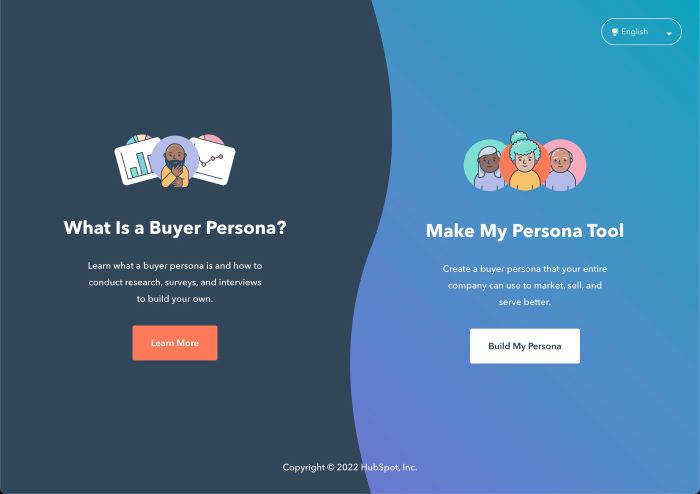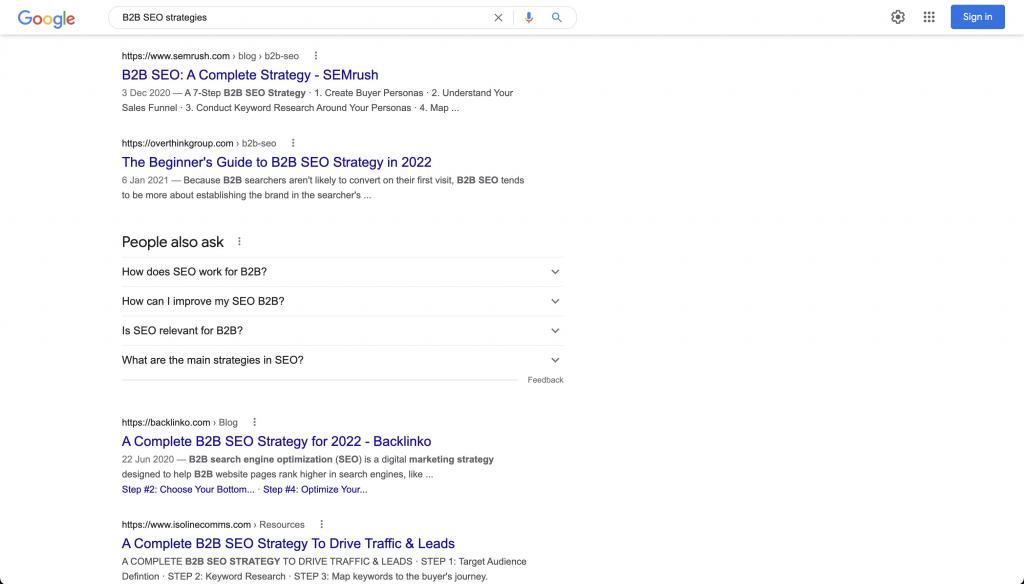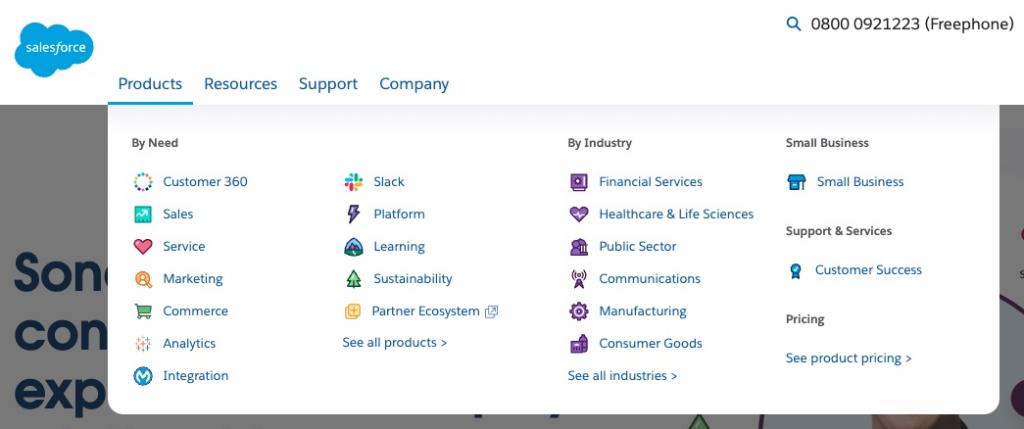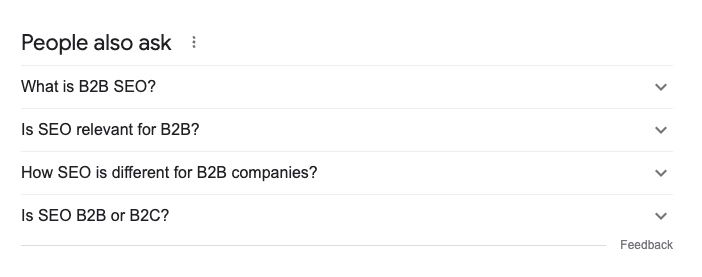Search Engine Optimisation (SEO) is a great way for B2B companies to raise awareness of their brand and get more website traffic.
Your dream customers are using search engines every day to ask questions. They are looking for answers to help them solve their pain points.
But many B2B companies are making a set of common mistakes which are holding their SEO efforts back. Meaning searchers won’t find your website when they ask questions on Google.
In this post, we look at the 6 most common mistakes and how to fix them.
These mistakes are:
- Not knowing their target customer
- Direct competitors ≠ SEO competitors
- Low-quality service or product pages
- Content strategy lacks direction
- Ignoring “zero volume” keywords
- No internal education (don’t get buy-in)
Before we begin, this guide assumes you have done keyword research and have been trying to optimise your website already. If you haven’t done this, click on this link for a beginner’s guide to B2B SEO before reading below.
Mistake 1: Not knowing their target customer
This is potentially the most important step in a B2B SEO campaign. Without researching your target customer, you’ll go in the wrong direction.
You won’t know:
- What pain points does your customer have?
- How and where do they consume content online?
- What content can you create to help them?
- How do they buy products or services like yours?
- Who is the key decision maker in their organisation?
- Who is involved in the purchase process?
By speaking to your target customer, you can find this out and more. You’ll gain key insights relevant to what you sell.
But why is this important for SEO?
All of this will feed into your keyword research and then into the content you create.
The better you understand your customer, the easier it is to create the correct content, and rank higher in the search results.
And ongoing content creation is how you will rank for more keywords, get in front of your target customer, and grow your traffic. We’ll cover that more in Mistake 4.
How to fix this:
(1) Speak to your customers:
A good place to start is asking questions to get answers to the bullet points above. In short, you want to find out what current problems your customers have and how they buy your products or services. This helps feed into the next step…
(2) Create buyer personas:
Buyer personas are detailed descriptions of your target customers. Listing demographics, challenges, and other key facts to help you better understand your customer. You will refer back to these during your SEO campaign and when creating content.
If you haven’t got these already, these are essential to any B2B marketing activity. You can use HubSpot’s free Make My Persona tool to create your personas.

Mistake 2: Direct competitors ≠ SEO competitors
Another mistake B2B companies make is not distinguishing between their direct competitors and their SEO competitors.
An SEO competitor is any website that consistently ranks in the top 10 positions for the target keywords you want to rank for. And these can be very different to the companies you see as your direct (or even indirect) competitors.
When you search for your product or service, in our case for example, “SEO agency Cambridge”. We recognise the sites ranking in the top 10 positions - other agencies in Cambridge - our direct competitors.

I wouldn’t class these SEO tools, or even the freelancers, as direct competitors. But they rank for the keyword I want to rank for, which makes them an SEO competitor.
Your direct competitors aren’t the only people you’re trying to outrank. When it comes to creating content for your website, your SEO competitors can be a mixture of websites.
How to fix this:
After you have done keyword research, look at the search results (in an incognito window) for each of the keywords you want to rank for.
You’ll start to notice some of the same sites ranking again and again in the top positions.
These are your SEO competitors. Use these to research and learn from.
Note: If you pay for the Ahrefs SEO tool, you can use their competing domains report. And a similar report for SEMrush’s tool.
Mistake 3: Low-quality service or product pages
Your service and product pages are the most important pages on your website. These are the pages where your prospect will read and learn about how you can help them.
However, there are a couple of mistakes B2B companies make with them.
Firstly, they don’t have them! Or they just list the services out on one long page as bullet points or different text sections.
Secondly, this page needs to be in-depth and have the correct content. Without this, you won’t be able to rank for your target keywords.
How to fix this:
Create unique pages for each of your product or service pages. Without this unique page, Google won’t be able to rank your site well for your target keywords.
Here’s an example from Salesforce:
Each of their products has a unique landing page. And they also have pages for different industries they help.
For more detailed advice on creating new pages for your website, I run through this in Step 4 of our B2B SEO guide. Click here to go directly to that step.
Mistake 4: Content strategy lacks direction
Ongoing content creation is essential for B2B companies to grow their organic traffic.
You need to be creating content (usually on your blog) to answer your customer’s questions and address their pain points.
However, this content needs direction. It needs to follow a plan. You can’t think of blog posts on the fly, week by week, and then write them in a hurry.
When you create content like this it’s usually to tick a box.
But creating great content takes time and it’s difficult. And with limited resources, you want to ensure you’re creating the best possible blog posts first and not just random posts.
Which can waste your time and money!
How to fix this:
When creating a content strategy for a client, we carry out keyword research to find a list of relevant topics for us to write about.
Once we have this long list of keywords and topic ideas, there are 3 key areas we look at when deciding what posts to write first.

(1) Relevance:
Remember in Mistake 1 when you spoke to your customers? Speak to them again before writing any content.
Do they think this type of content will be useful? Are they currently having this problem? Because, if they don’t think it will be useful or they don’t have this problem, then there’s no need to spend time writing the content.
Also, is the content relevant to the direction the business is going in? Does the content align with the wider business goals? If not, again, there is no need to spend time writing the post. Write content that goes in the direction your business is going in.
(2) Search volume:
This is an easy one. How many people are searching for this topic on Google per month? If all other things are equal, the higher the search volume the better. SEO tools (free and paid) will be able to give you monthly figures for search volumes.
However, one thing to consider is that (usually) the higher the search volume, the more difficult it is to rank for that keyword. More on that next…
(3) Keyword difficulty:
Some SEO tools will give you a score and tell you how difficult it is to rank for a keyword. Use these as guidance, but do your own checks as well.
One of the easiest ways to check if a keyword will be difficult to rank for is to look at the search results. As a general rule of thumb, if you see lots of high authority websites (the big players in your industry) ranking for a keyword, it is going to be harder to rank for that.
In summary, we look at these three areas and try to create a post relevant to the business that has good search volume and will be easy for that website to rank for.
Mistake 5: Ignoring “zero volume” keywords
Traditional SEO tends to follows this process: Using tools, find keywords that have lots of search volume, and then make a page on your website to rank for these keywords.
However, with B2B SEO, there’s an important set of keywords that don’t show up in SEO tools - “zero volume” keywords”.
As the name suggests, these keywords don’t show up in SEO tools because they don’t get enough search volume. The tool thinks they are low volume and unimportant.
But, contrary to traditional SEO belief, this doesn’t make these keywords any less important.
Here’s an amazing video on this topic explaining why zero volume keywords shouldn’t be underestimated:
In short, people search on Google in many different ways - especially when it’s a question - which can be asked in hundreds of different ways.
How to fix this:
There are three approaches to zero volume keywords.
(1) Speak to your customers:
Once again, speaking to your customers can provide you with a wealth of information on the issues they are having. It can help you uncover topics that you know your customers are having, even if the SEO tools show a low/no search volume.
(2) People Also Asked:
Some of the best zero volume keywords are right in front of you in the search results. You can look at the People Also Asked boxes Google has on the search results (pictured below). These are suggestions of what other people are searching for on Google, so you know people are asking these and they have some search volume.
If you have some budget, you can use a paid tool like Also Asked (3 free searches a month) which gives you a long list of People Also Asked questions.

Mistake 6: No internal education (don’t get buy-in)
If you’re reading this post, you either work in marketing, you’re the person in your company doing SEO, or you’re the person that will be doing SEO. Because of this, you likely understand how important SEO is for your company and the benefits it can bring.
However, not everyone in your company will think like that! Your colleagues and even your boss might not see the value of SEO.
And this brings u to our 6th and final mistake. A lack of education internally at companies about SEO and its value. Without this, you won’t get buy-in from other stakeholders.
This is very important. Because without buy-in, even the best SEO recommendations won’t get implemented.
How to fix this:
We’ve created a whole playbook to help marketing teams get buy-in for SEO, which can be viewed here. We run through 5 steps that you can implement to help others see the value of SEO.

These are:
(1) Educate key stakeholders about modern SEO
(2) Show the total market opportunity
(3) Align a clear SEO strategy with the company’s
(4) Be honest; SEO is a big investment
(5) Push your stakeholder’s buttons
Gaining buy-in won’t happen overnight. It’ll take time and perseverance, but the opportunity available is worth the persistence.
Summary
So, there we go! 6 common mistakes we see B2B companies make with their SEO and how to fix them.
As we briefly touched in the last point, SEO is a big investment. It requires multiple teams to work together to create content, build backlinks, and drive traffic to a website.
But when done correctly, it can become one of the business’s biggest assets in generating new customers.
If you have any questions about this post, you can reach out to me personally on stephen@spaced.digital.
